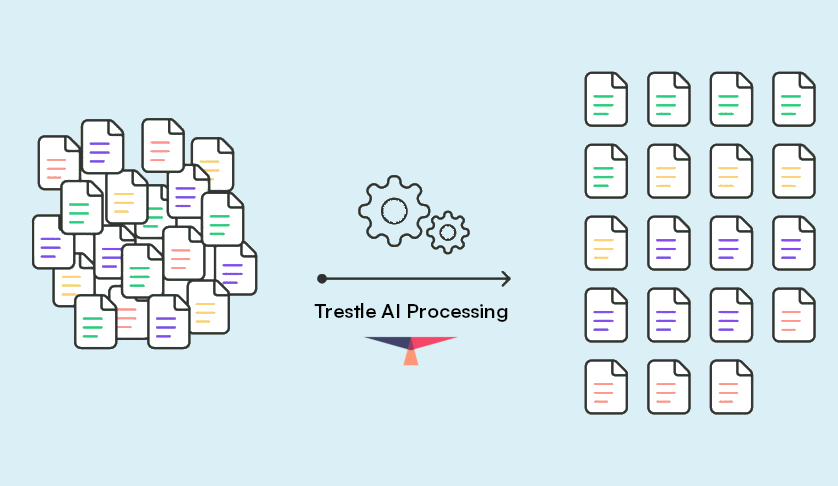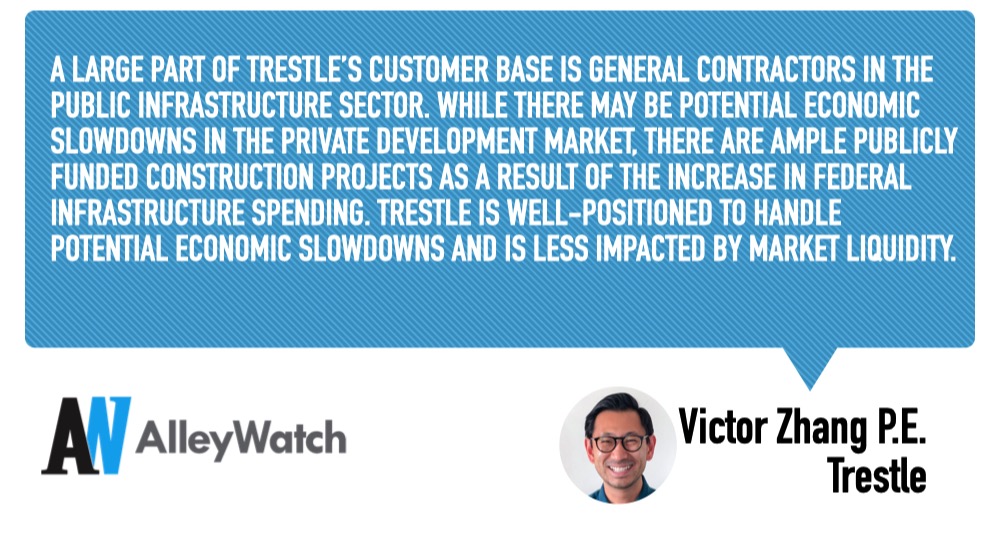The Power of Subcontractor Performance Feedback and Other Historical Data in Predicting Future Outcomes


In construction, historical data is typically associated with tangible metrics such as material strength and construction timelines. This focus on hard data — not on word of mouth or tribal knowledge — is well established. Still, the industry overlooks the potential of softer data such as subcontractor performance feedback, subcontractor reliability, and vendor reviews. As a general contractor, you don't want to miss opportunities to leverage historical data to inform future decisions effectively.
Uses of Historical Data in Construction
The construction industry uses historical data to improve several key operational aspects. Here’s how you can apply this data across different areas:
Material Durability and Costs
In construction, choosing the right materials is crucial for your project's success and longevity. Contractors and construction companies collect and analyze data from previous projects about the performance of certain brands and types of materials.
If a certain type of concrete has been shown to crack prematurely in past projects, you might opt for a higher grade or different mixture in future constructions for better durability and to avoid potential liability.
You can also access benchmark guides to see how your projects hold up against industry standards and look at publicly available reviews to verify what other contractors may be sharing about their experiences with certain materials and subcontractors. You can see which parts of your process can be improved and advise your clients on the best course of action when necessary.
If the cost of certain construction materials has gone up steadily over time, you can also factor that data into your estimates. By using material cost and durability data properly, you stay within budget while delivering a solid final product to be proud of.
Project Timelines
How long a project will take to complete is always one of the main concerns a client has. Being able to confidently give a timeline for every project and then stick to it is one of the key ways you maintain good business relationships with your clients.
Going over the deadline on a project also raises the final construction cost. You can use historical data to estimate the duration of tasks such as pouring foundations, erecting frameworks, and installing electrical systems.
If you have access to correctly labeled historical data, you can accurately estimate how long every part of a future project will take. For example, if a client asks how long it would take to install an HVAC system, you can give them an accurate timeline and quote right away.
Historical data can also help you identify what caused delays in past projects and whether they were preventable or caused by such external factors as weather-related interruptions or supply chain issues.
Safety Records
Construction sites are inherently risky, and maintaining safety is a top priority. Firms analyze accident reports and safety breaches from past projects to identify common hazards and prevent repeat incidents. For example, if a review of safety records indicates that falls from scaffolding are a recurring issue, you might implement additional safety training sessions focused on fall prevention, upgrade scaffolding equipment, or enforce stricter safety checks.
These examples show construction’s capability to apply quantitative historical data to improve outcomes. Using data pays off — a recent Deloitte study has shown that data leaders in the construction sector have 50% higher profit growth than data beginners. However, the industry has room to expand its data utilization scope, particularly in areas that are less straightforward to measure.
What Construction Can Learn From Other Industries
Other industries demonstrate the value of combining quantitative (hard, numbers-based) and qualitative (language, interpretation-based) data to inform business decisions. Here’s how different sectors apply these data types and what you can learn from them:
Retail Industry
The retail sector makes extensive use of customer sentiment analysis derived from online reviews and social media feedback. This data helps retailers understand what customers think about their products and services.
Positive feedback about a product feature might lead to emphasizing that feature in marketing campaigns or developing similar products. Construction companies can adopt similar strategies by analyzing feedback from project stakeholders to adjust their services, improve client relations, and refine project outcomes.
Healthcare Industry
In healthcare, patient feedback is a critical component of operational and staffing decisions. Feedback about doctors, nursing staff and the overall patient experience can directly influence who gets hired, who receives additional training, and what services may require enhancement. Similarly, construction firms can use client and subcontractor feedback to assess and enhance team performance, improve service delivery, and make sure that projects meet or exceed expectations.
Hospitality Industry
The hospitality industry relies heavily on online ratings and reviews to shape service offerings. Hotels, for example, use guest feedback to make a wide range of operational adjustments, from redesigning guest rooms to altering food and beverage menus. In construction, similar attention to client feedback after project completion could guide marketing strategies, project management practices, and client engagement protocols, making certain that projects not only meet but also anticipate client needs.
Leveraging Qualitative Data in Construction
The construction industry can benefit from adopting qualitative data strategies similar to those in retail, healthcare, and hospitality for managing relationships with subcontractors and vendors. Here’s how you can implement these strategies:
Subcontractor Performance Reviews
Systematic collection and analysis of feedback on subcontractors can transform the way general contractors select their partners for future projects. For instance, if subcontractor performance feedback indicates that a particular subcontractor consistently meets deadlines and exceeds quality standards, you'll be confident in hiring them for upcoming projects. Conversely, subcontractors who receive negative feedback could be given lower priority or be required to improve before you extend a new contract to them. This approach helps you involve only reliable and high-performing subcontractors in your projects, minimizing project delays and improving quality output.
Vendor Management
Evaluating vendor interactions through systematic feedback is another area where construction can learn from other sectors. Similar to how healthcare facilities assess vendors for medical supplies based on delivery times and product quality, construction firms can evaluate building material suppliers on punctuality, quality, and compliance with safety standards. This feedback helps you in prequalifying vendors and maintaining a roster of suppliers that consistently meet project standards and expectations.
Integrating Software Solutions
Specialized software solutions can streamline these processes. Tools such as Trestle are designed specifically to handle the nuances of the construction industry, making it easier for you to collect, analyze, and apply qualitative data effectively. They support robust vendor management systems and subcontractor performance reviews and integrate seamlessly into day-to-day operations.
Data Is the Future of Construction
The potential of historical data in construction extends beyond just concrete and steel. By embracing both the quantitative and qualitative aspects of past projects, you can enhance decision-making, reduce risks, and deliver the best possible results to clients. Collecting as much data as possible and turning it into actionable, searchable information can help you stay ahead of competitors and maintain good relationships with customers. See how Trestle can help you make the most of your data today.
Keep Reading





